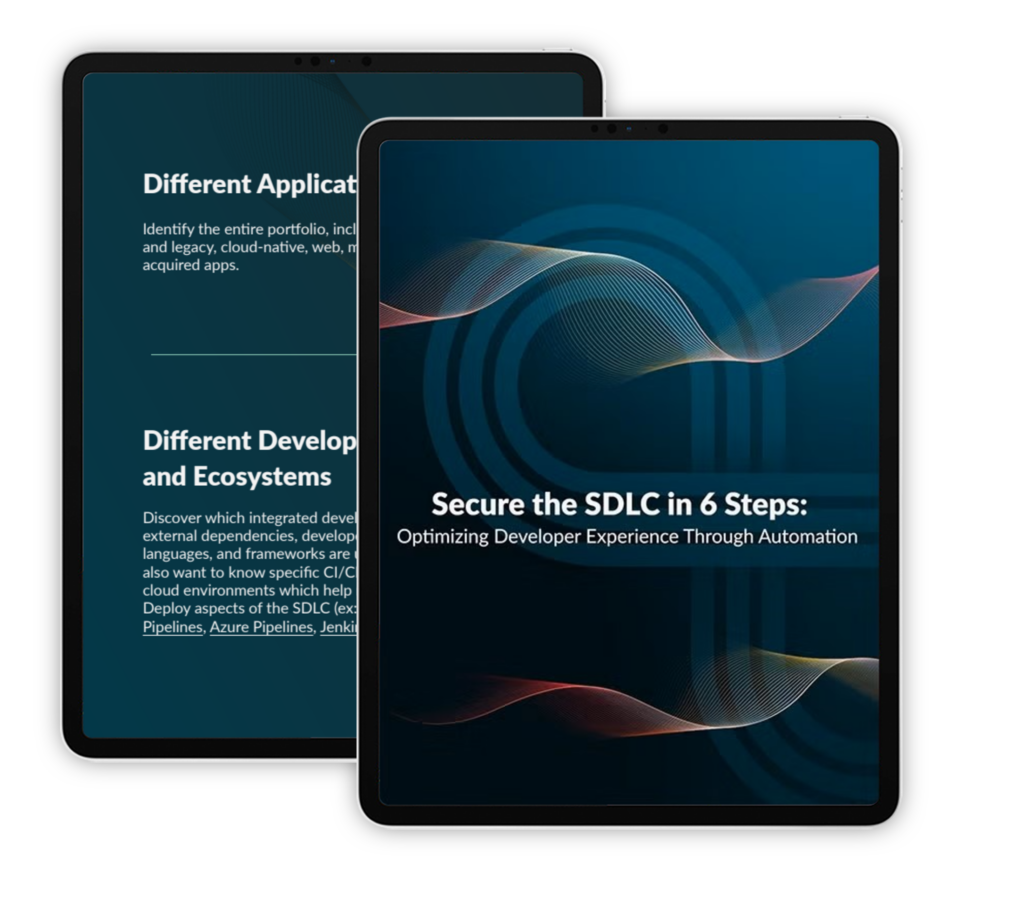Lax security measures in the software development lifecycle (SDLC) can lead to severe financial repercussions for organizations. The Verizon 2024 Data Breach Investigations Report highlights this growing risk, stating, “Our ways-in analysis witnessed a substantial growth of attacks involving the exploitation of vulnerabilities as the critical path to initiate a breach when compared to previous years. It almost tripled (180% increase) from last year.”
This underscores the critical need to integrate security practices throughout the SDLC. Let’s delve into the importance of this integration and explore strategies to overcome common pitfalls in the process.
For a deep dive into our expertise on integrating security measures, automation, and advanced testing techniques for secure software development at speed, download the eBook, Secure the SDLC in 6 Steps: Optimizing Developer Experience Through Automation.

Pitfalls that Lead to Insecure Software Development
If security is a bottleneck for your software development organization, know that you’re not alone. Organizations often struggle with the following issues:
- Identifying and Assessing Risks: Without a clear understanding of potential risks and vulnerabilities, organizations may unknowingly release software with security flaws, leaving them exposed to attacks.
- Insufficient Prevention Methods: Inadequate security controls and testing tools in the development process can result in security flaws reaching production environments, compromising the integrity and confidentiality of sensitive data.
- Lack of Integration and Automation: Manual security processes and disjointed tooling can lead to inefficiencies, delays, and human errors, hindering the development process and increasing the risk of security breaches.
- Compliance Challenges: Meeting regulatory requirements and industry standards can be a complex task without a secure SDLC in place. Organizations may struggle to demonstrate compliance, leading to potential legal and financial consequences.
- Ineffective Prioritization and Remediation: Without a systematic approach to prioritizing and addressing security findings, organizations may struggle to allocate resources effectively, leaving critical vulnerabilities unaddressed and increasing the risk of exploitation.
Overall, the absence of a secure SDLC creates numerous challenges for organizations, making it imperative to implement security measures early and often.
Why Securing the SDLC is Essential
Implementing a secure SDLC is crucial for organizations to mitigate risks, protect sensitive data, and ensure compliance. By integrating security into each step of the development process, organizations can:
- Proactively Identify and Address Risks: A secure SDLC enables organizations to discover and assess potential risks early on, allowing for timely remediation or mitigation to prevent security flaws from entering production.
- Establish Prevention Methods: By implementing security controls, testing tools, and developer education programs, organizations can prevent security flaws from reaching production environments, reducing the risk of cyberattacks and data breaches.
- Optimize Developer Experience: A secure SDLC prioritizes security from the beginning, empowering developers to focus on building high-quality, functional code without having to leave the integrated developer environment (IDE) for security checks. This not only increases efficiency and productivity but also instills confidence in the security of the product.
- Ensure Compliance: Integrating security into the SDLC helps organizations meet regulatory requirements and industry standards, reducing the risk of legal and financial consequences.
- Prioritize and Address Findings: A systematic approach to prioritizing and addressing security findings – that harnesses the power of AI – ensures that vulnerabilities are promptly remediated or mitigated, reducing the overall security debt and enhancing the organization’s security posture.
By prioritizing and addressing security findings throughout the SDLC, organizations can proactively identify and address potential risks before they become a major issue.
Steps for Secure Software Development at Speed
By taking proactive measures, organizations can ensure the integrity, confidentiality, and availability of their software, mitigate security risks, and prevent security debt accumulation. We’ve detailed our expertise on integrating security measures, automation, and advanced testing techniques for secure software development at speed in our eBook, Secure the SDLC in 6 Steps: Optimizing Developer Experience Through Automation.

